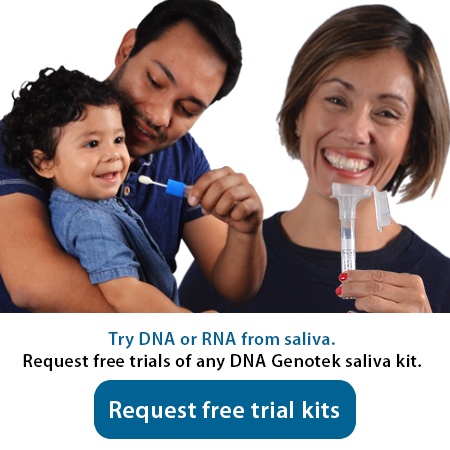2018-10-31
Every second over 8000 tweets are sent out on Twitter1 and, in the United States, 90% of adolescents and 65% of adults use some form of social media to curate, share and/or communicate information.2 The rise of social media has transformed how scientists conduct research, communicate findings, and aggregate information. In this issue of The Genetic Link, we explore how science is harnessing social media, where it is being best-used and what this means for you.
The Internet is a leading source of information regarding scientific issues, with 60% of Americans indicating the world-wide web as their first go-to for science-related news,8 and millions of followers on science-related pages on Facebook.9
In 1991, Harnad heralded electronic publishing as “The fourth major cognitive revolution on par with the advent of language, writing and print.”3
In large scale surveys, use of social media platforms by academic researchers is high – ranging from 75-80%. Social media applications include: “social networking, reference management, social data management, video, blogging, microblogging, wikis and social recommending, rating and reviewing”.2
How is academic scholarship measured on social media?
Introduced in 2010, altmetrics (short for alternative metrics) are non-traditional bibliometrics based on social media activity proposed as a compliment or alternative to traditional citation impact metrics, such as journal impact factors and publication citations.2 Recent studies have endeavored to correlate altmetrics with traditional metrics with mixed results. One study focusing on the fields of ecology and conservation found a positive correlation between social media engagement and citation rates. However, they noted the increasing trend to post publications on social media in recent years did not relate to the same bump in citation rates as found in earlier years – signaling a diminishing return on investment. Furthermore, 80% of the articles tracked by altmetrics on Twitter were tweeted less than 5 times.4,5 Another study showed promotion of academic articles via Twitter/blogs did enhance download and citation rates.6 One of the barriers to comparing alternative and traditional measures is that on-line science communication occurs in the immediate weeks following publication, while traditional citations accrue months to years later.4,5
“There’s a big hype when a paper comes out, but then there is this underwhelming lull for a year or two as you wait for citations to accumulate, so you don’t know whether your science is reaching people.”4 - Clayton Lamb, a University of Alberta Ph.D. candidate.
Instead of trying to bolster traditional citation counts, social media can be useful as an effective communication tool to the masses. One of the goals of medical research is to improve healthcare by disseminating new knowledge effectively to medical practitioners, patients and the public.7 Additionally, in fields such as ecology and conservation, public understanding of this science is critical to addressing pressing societal issues regarding climate change, changing policy and public engagement.4,5,8
Who are reading scientific posts in social media and does public engagement (posts, likes, shares) indicate scientific excellence or a popularity contest?
In a study profiling blog readers, Paige Brown Jarreau and Lance Porter from Louisiana State University classified consumers into three types: information seekers, one-way users and super users. They found those mostly interested in reading blogs as a source of scientific information tended to be older, while super users who were very active creating, curating and reading material tended to be younger. The educational breakdown between super users and information seekers, however, was roughly equivalent. With respect to the motivation to read scientific blogs, those with higher levels of education tend to be primarily interested in learning new information or perspectives, while those with lower education tend to be entertainment seekers.8
Who are using social media platforms, both creating, sharing and consuming content?
In an examination of the top 30 science-based Facebook and Twitter accounts, posted content focused on only a few specific areas; therefore they’re highly specialized.9 Unsurprisingly, scientists tend to group within their area of expertise.10,11 Use patterns vary by field of study, with an over-representation of social, computer and information scientists and an under representation of mathematical, physical and life scientists.10,11 Health and social sciences posts geared to appeal to a wider audience were similarly more common.9,10,11 A gender gap similar to that with traditional scientific publication authorship also exists in scholarly communication on social media with blog and Twitter content generation being male-dominated.2,10,11
Concerns limiting wide-scale use of social media by academic researchers.
To date, an abundant amount of literature focuses on social media threats to professionalism rather than how to most effectively harness it for mass outreach.7,12 In a 2014 study on perceived professionalism on social media involving medical students, faculty and the public - faculty members indicated a significantly lower comfort level and feeling of appropriateness than medical students. Similarly, perceptions of credibility of social media vary with age - with younger scholars indicating a more positive perception than older scholars.2,13 Part of this might be the blurring of boundaries on social media between professional and personal use. In an analysis of sharing behaviors of scientists on Twitter, only a small portion of shared URLs were found to be science-related and the “majority of the tweets were personal.”10 Academic and commercial views of the importance of social media access are split, with some companies blocking or discouraging use due to reduced work productivity, whilst others encourage it due to increased access to up-to-date information and communication outreach possibilities.
Progressive academic institutions are creating social media policies aimed at influencing the behavior of its users without imposing overt restrictions. Mayo Clinic is one such progressive institution with their simple and clear policy of “Don’t lie, don’t pry, don’t cheat, can’t delete, don’t steal and don’t reveal.”7
“It’s about being able to put your finger on the pulse of science, to get out and listen to what’s happening on the scientific street corner.”10 – Jason Priem, information scientist and co-founder of Impactstory (non-profit company that tracks the reach of scientific studies, data and web pages).
In summary, researchers need to weigh the benefits of social media, such as increased public engagement and access to scientific information, against the cost of time and sacrificed privacy. Social media is a powerful communication tool and an area that will continue to evolve. Understanding how to best harness its power and measure its research impact will be of great value in the future.
References:
1. Internet Live Stats. In 1 second, each and every second, there are. Internetlivestats. Accessed 14 Sept 2018. http://www.internetlivestats.com/one-second/.
2. Sugimoto CR et al. Scholarly Use of Social Media and Altmetrics: A Review of the Literature. J Assoc Inf Sci Technol. 68(9):2037-2062 (2016). https://doi.org/10.1002/asi.23833.
3. Harnad S. Post-Gutenberg galaxy: The fourth revolution in the means of production of knowledge. Public-Access Computer Systems Review. 2:39-53 (1991).
4. University of Alberta. How social media helps scientists get the message across: New study suggests good research pushed through social media gets more citations. ScienceDaily. ScienceDaily, 12 April 2018. Accessed 14 Sept 2018. sciencedaily.com/releases/2018/04/180412085729.htm.
5. Lamb CT, Gilbert SL and Ford AT. Tweet Success? Scientific communication correlates with increased citations in Ecology and Conservation. Peer J. 6:4564 (2018). doi: 10.7717/peerj.4564.
6. Botting N, Dipper L and Hilari K. The Effect of Social Media Promotion on Academic Article Uptake. J Assoc Inf Sci Technol. 68(3):795-800 (2015). https://doi.org/10.1002/asi.23704.
7. Chan TM et al. Social Media and the 21st-Century Scholar: How You Can Harness Social Media to Amplify Your Career. J Am Coll Radiol. 15(1 Pt B):142-148 (2018). doi: 10.1016/j.jacr.2017.09.025.
8. Jarreau PB and Porter L. Science in the Social Media Age: Profiles of Science Blog Readers. Journal Mass Commun Q. 95(1):142-168 (2017). https://doi.org/10.1177/1077699016685558.
9. Hitlin P and Olmstead K. The Science People See on Social Media. Pew Research Center. Pew Research Center. 21 Mar 2018. Accessed 14 Sept 2018.
10. McQuate S. What all those scientists on Twitter are really doing. com. Macmillan Publishers Limited, part of Springer Nature, 20 Apr 2017. Accessed 14 Sept 2018. https://www.nature.com/news/what-all-those-scientists-on-twitter-are-really-doing-1.21873.
11. Ke Q, Ahn YY and Sugimoto CR. A systematic identification and analysis of scientists on Twitter. PLoS One. 12(4):e0175368 (2017). doi: 10.1371/journal.pone.0175368.
12. Muscanell N and Utz S. "Social networking for scientists: an analysis on how and why academics use ResearchGate", Online Information Review, 41(5):744-759 (2017). https://doi.org/10.1108/OIR-07-2016-0185.
13. Jain A et al. What is appropriate to post on social media? Ratings from students, faculty members and the public. Med Educ. 48(2):157-169 (2014). doi: 10.1111/medu.12282.


